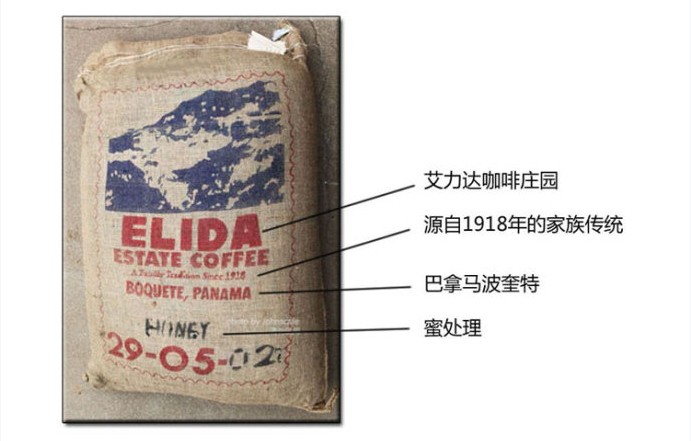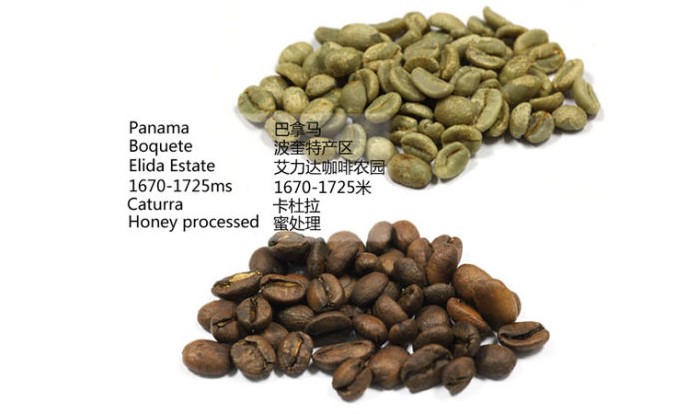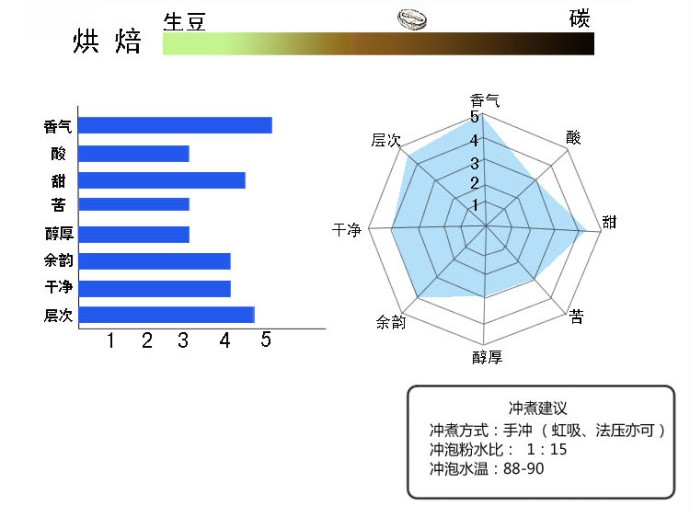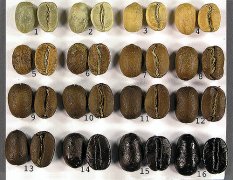Panamanian Pokuit boutique coffee beans roast Alida Farm.
Panama, a country that people know too well, has always had an inextricable bond with high-quality coffee. It tastes fresh, elegant and floral. Sweet honey has always been a recognizable symbol of Panamanian high-quality coffee, making it unforgettable for those who drink it.
This time we bring you not the rosy summer of Esmeralda, nor the coffee beans of Berlina, but the coffee of ELIKA ESTATE, another famous farm in Pokuit.
The history of ESTATE Alida Farm can be traced back to 1918. The farm was owned by the Lamastus family, and the name of the farm Elida Alida was the name of the then farmer, Mrs. Robert Louis Lamastus.

Alida Farm is located in the Alto Quiel area of Pokuit, where the elevation is about 1670 m-1725 m. The main varieties of coffee planted in the farm are the improved Kaddura species, and there are also a small number of bourbon species. ELIKA ESTATE (Alida) Manor is also a participant in BOP (Best of Panama) for many times, and has achieved very good results, thus gaining fame.
The famous beans in Alida Farm are also his washed beans, which taste clean and clear, with a floral aroma. At present, Alida Farm tries a variety of treatment methods, including water washing treatment, sun treatment and honey treatment of coffee beans. It is worth mentioning that Arida garden honey treated coffee beans, a combination of sun treatment and water washing treatment. The fresh coffee berries were directly fermented after removing the outer pericarp, which not only kept the taste clean, but also got the fruity and wine aroma produced by the sun treatment.

The particles of this coffee bean are not large and round. Due to the use of honey treatment, the middle line of the beans is not clear. There are obvious traces of sheepskin outside the beans, and the color is green.
The beans can be baked in a medium and shallow degree and come out near the end of an explosion to retain their rich flavor while ensuring a sense of overall roundness.
Dry fragrance can be said to be the most charming place of this bean. After grinding, you can obviously feel a kind of elegant floral fragrance, fresh and elegant, but it is not like Yega Xuefei's floral fragrance rising all the time, but a feeling of eloquence. In addition, there is obvious honey sweetness, the overall dry fragrance is low and melodious, the honey fragrance is more prominent after water injection, and the entrance of the coffee is very gently sour across the mouth. Its aroma is more concentrated in the front part of the mouth, that is, the moment after the entrance. After drinking, the taste left in the mouth has a hint of cocoa, but more prominent is an elegant floral aroma. The mellow thickness has always been the weakness of Panamanian coffee, but this time the honey-treated coffee beans are very round and mellow. Mellow is also much better than the performance.

Important Notice :
前街咖啡 FrontStreet Coffee has moved to new addredd:
FrontStreet Coffee Address: 315,Donghua East Road,GuangZhou
Tel:020 38364473
- Prev

Yega Xuefei roasting records the roasting process of coffee beans
Yega snow coffee: turn the cage on the oven, preheat it at 170 degrees for 2 minutes, serve the coffee beans. Bake at 170 degrees for 2 minutes to 250 degrees. After about 11 minutes, hear the first explosion for more than ten seconds and quickly take it out and rotate to the cooling plate to cool down. Coffee beans are slightly deeper than the standard medium roasting, and the actual roasting degree must be below medium. A lot of silver skins are still glued to the coffee beans, indicating that they are not roasted enough.
- Next

The roasting depth listed in the roasting degree of raw coffee beans is deepened one by one.
The baking depth listed below deepens the raw beans (Green Coffee). The beans that have not been baked are green in appearance, and the color will change with the degree of baking. Light baking (Light Roast) is the most mild baking method, the appearance is wheat color, after extraction, there is no fragrance, bitter taste, not suitable for drinking cinnamon baking (Cinnamon Roast) mild baking method, the appearance is cinnamon color, more Light Ro
Related
- Beginners will see the "Coffee pull flower" guide!
- What is the difference between ice blog purified milk and ordinary milk coffee?
- Why is the Philippines the largest producer of crops in Liberia?
- For coffee extraction, should the fine powder be retained?
- How does extracted espresso fill pressed powder? How much strength does it take to press the powder?
- How to make jasmine cold extract coffee? Is the jasmine + latte good?
- Will this little toy really make the coffee taste better? How does Lily Drip affect coffee extraction?
- Will the action of slapping the filter cup also affect coffee extraction?
- What's the difference between powder-to-water ratio and powder-to-liquid ratio?
- What is the Ethiopian local species? What does it have to do with Heirloom native species?

